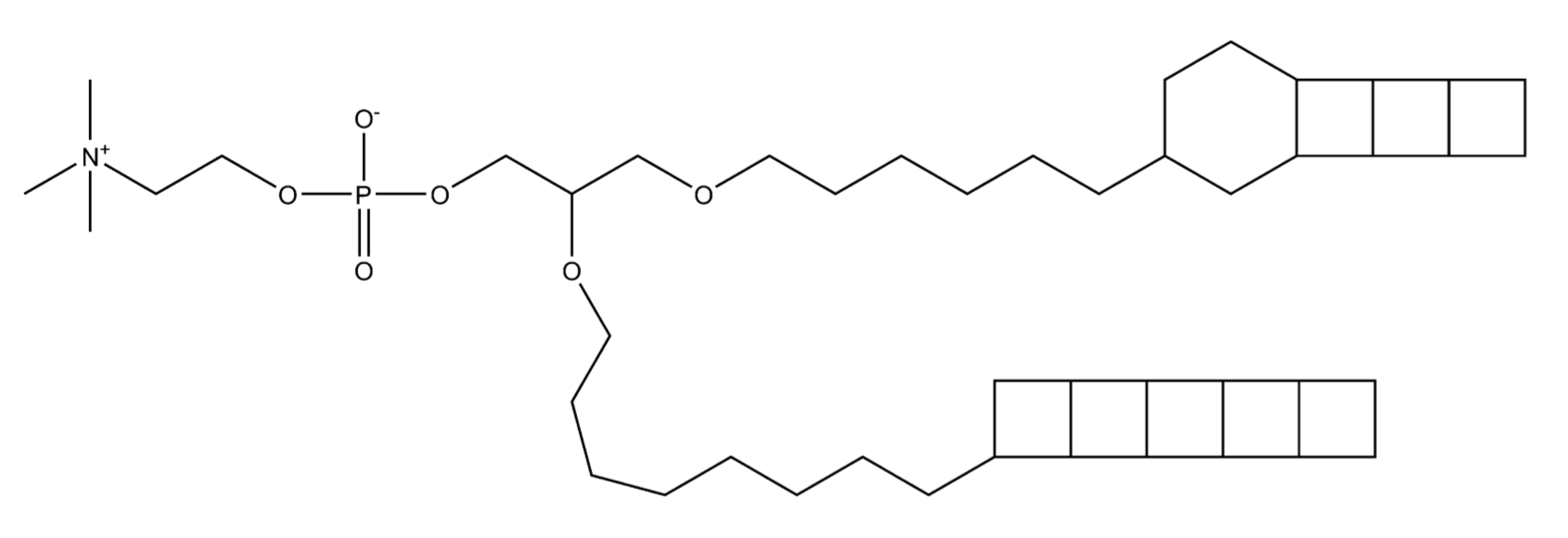
Fatty acids with cyclobutane rings were discovered as constituents of membrane lipids in anaerobic ammonium-oxidizing (anammox) bacteria (Candidatus spp, order of the Planctomycetes) (Damsté S et al., Nature 2002, 419, 708). These fatty acids contain up to five linearly fused cyclobutane moieties, sometimes mixed with one or two cyclohexane rings (Damsté S et al., FEBS J 2005, 272, 4270). A typical example is pentacycloanammoxic acid which is composed of 5 fused cyclobutane units.

Ladderane fatty acids
Such “ladderane” structures are unprecedented in nature and occur in bacterial membranes as free fatty acids, fatty alcohols, alkyl glycerol mono- or di-ethers, phosphocholine diether and phosphocholine ester/ether and phosphoethanolamine diether and phosphoethanolamine ester/ether (Boumann HA et al., FEMS Microbiol Lett 2006, 258, 297). They are supposed to protect the cell from the toxic anammox intermediates located in specialized organelles (anammoxosomes), the membrane of which contains these unique lipids found nowhere else in nature. Anammox bacteria, found in the ocean, anaerobic bogs and lakes, and in waste-water treatment plants, oxidise ammonia and nitrate to nitrogen and water, via a hydrazine intermediate.
These lipids seem to be limited to these bacteria which were shown to play an important role in the nitrogen cycle in the ocean (Kuypers M et al., Nature 2003, 422, 608). Therefore, they are considered to be the unique biomarkers for the process of anaerobic ammonium oxidation. They were detected in suspended particulate matter obtained from various water depths in the Arabian Sea (Jaeschke A., Limnol Oceanogr 2007, 52, 780) and in sediments (Hopmans EC et al., Rapid Comm Mass Spectrom 2006, 20, 2099).
A very curious group of complex lipids based on cyclobutane ring(s), for example ladderane phosphatidylcholine, has been described in anammox (anaerobic ammonium oxidizing) bacteria (Lanekoff I et al., Anal Bioanal Chem 2010, 397, 3543). The presence of intact ladderane lipids in natural sediments displaying anammox activity was determined, thus showing the usefulness of a specific ladderane PC as a biomarker for viable anammox bacterial cells.

A ladderane phospholipid
Devenez membre et participez au développement de la Lipidomique au XXIème siècle.
S'inscrire